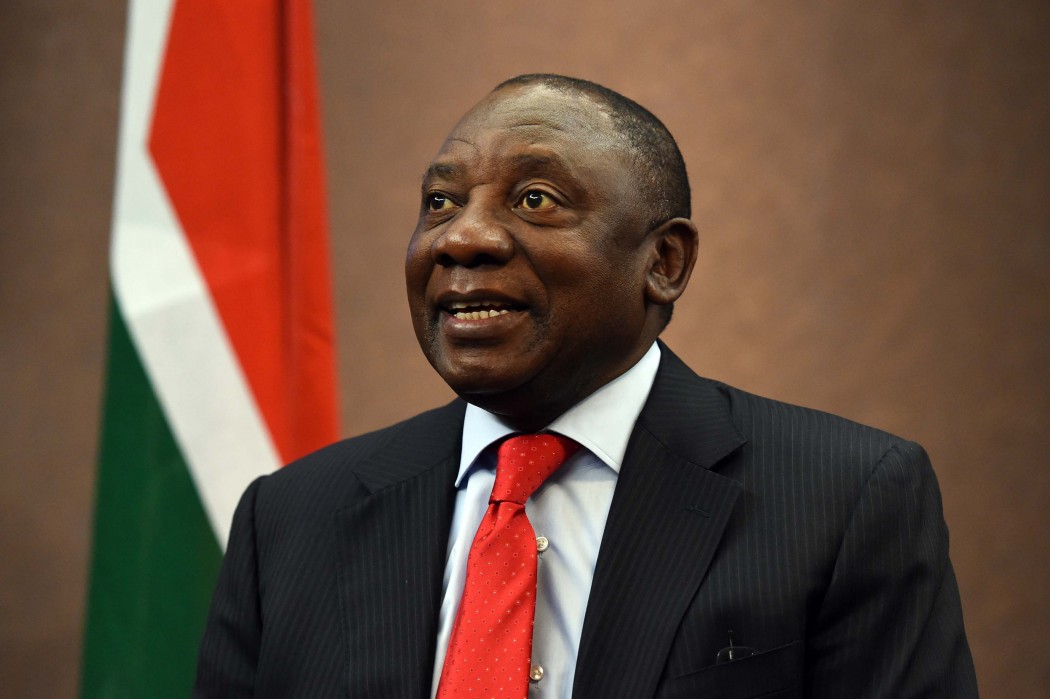South African President, Cyril Ramaphosa has signed into law the national minimum wage bill.
The National Minimum Wage Act sets South Africa’s minimum wage at 20 rands ($1.45) per hour, equal to 3,500 rands per month (N126,000).
The development came at a time Nigerian workers are yet to get total commitment to N30,000 from federal and state governments.
Reuters reports that Ramaphosa’s office said on Monday that the signing was part of efforts by the government to tackle wage inequality in Africa’s most industrialized economy. The new minimum wage would come into effect January 1, 2019, would benefit about six million workers that currently earn R3,700 (N97,495).
Supporters of the minimum wage say it will reduce inequality and stimulate economic growth as workers spend more.
Thousands of union members protested against the proposed minimum wage in April.
The news is coming at a time Nigerian workers are uncertain their struggle for a N30, 000 minimum wage would yield result.
The Global Wage Report 2018/19 released on Monday, November 26, 2018, reveals that the world’s wage growth also hit a 10-year low, the last of its kind being in 2007.
One South African Rand exchanges for N26.35. This means South African workers would be earning N527 per hour: N4,216 per day and N126,480 per month. Their Nigerian counterparts currently earn N75 per hour, which is N600 per day (at eight working hours per day) and N18,000 per month.
Paid N30,000 as minimum wage, Nigerian workers would be earning N125 per hour or N1,000 per day, which amounts to N30,000 monthly.
Compared, a Nigerian worker would be earning less than a quarter of what the South African takes home monthly.
Ayuba Wabba, the president of Nigeria Labour Congress, NLC, said labour would soon meet to draw up a timetable within which government would be expected to conclude work on the new wage.
A report containing the resolution of a tripartite committee on a N30, 000 minimum wage was submitted to President Muhammadu Buhari recently.
Wabba, who spoke at the opening ceremony of NLC’s yearly Harmattan School in Abuja on Monday, however, declined to reveal the timeline. He hinted that the National Administrative Council of Congress would take a decision during its next deliberation, which might hold next week.
The ILO report finds that in real terms (adjusted for price inflation), global wage growth declined to 1.8 per cent in 2017 from 2.4 per cent in 2016. The findings are based on data from 136 countries.
In analysing wage growth, the report finds that in advanced G20 countries, real wage growth declined from 0.9 per cent in 2016 to 0.4 per cent in 2017. By contrast, in emerging and developing G20 countries, real wage growth fluctuated between 4.9 per cent in 2016 and 4.3 per cent in 2017.
In his reaction to the finding, the Director General of ILO, Guy Ryder, said: “It’s puzzling that in high-income economies we see slow wage growth alongside a recovery in GDP growth and falling unemployment. And early indications suggest that slow wage growth continues in 2018.
“Such stagnating wages are an obstacle to economic growth and rising living standards. Countries should explore, with their social partners, ways to achieve socially and economically sustainable wage growth.”
The report notes that in the last 20 years, average real wages have almost tripled in emerging and developing G20 countries, while in advanced G20 countries they have increased by just nine per cent.
In many low and middle-income economies, however, wage inequality remains high and wages are frequently insufficient to cover the needs of workers and their families.
The report calculates gender pay gaps in innovative and more accurate ways, using data covering some 70 countries and about 80 per cent of wage employees worldwide.
It also finds that globally, women continue to be paid approximately 20 per cent less than men. “The gender pay gap represents one of today’s greatest manifestations of social injustice and all countries should try to better understand what lies behind them and accelerate progress towards gender equality,” said Guy Ryder.
The report further finds that in high-income countries, it is at the high end of the pay scale that the gender pay gap is wider; while in low and middle-income countries the gender pay gap is wider among the lower paid workers.
According to econometrician and wage specialist at the ILO and one of the authors of the report, Rosalia Vazquez-Alvarez, “The gender pay gap represents one of today’s greatest manifestations of social injustice.”
Evidence, according to the report, shows that even before women reach motherhood, there is already a pay gap. This therefore suggests a need to combat stereotypes and discrimination at the point of entry into the labour market.
Additional reports by Guardian







